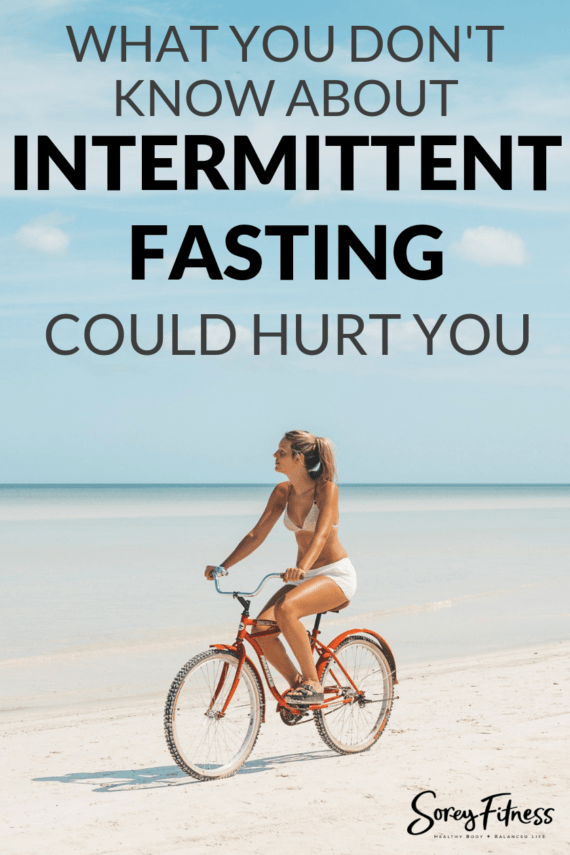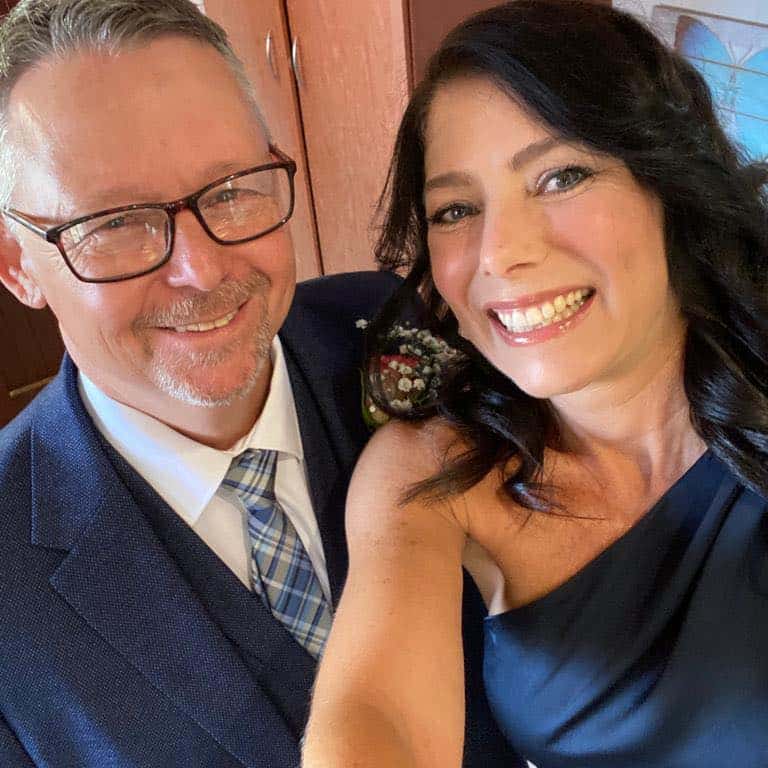Beginners Guide to Intermittent Fasting – How to and Benefits
This post may contain affiliate links. All opinions shared are my own. As an Amazon Associate I earn from qualifying purchases. Click to view our full disclosure.
All content is created by humans – not AI.
We looked into intermittent fasting (IF) because we were tired of always having to cook our healthy meals. We loved the idea of being able to simplify our eating to give us more time to sleep or relax.
Plus the idea of not having to track our food or mark certain foods as forbidden was really attractive to us. With intermittent fasting, you don’t have to count macros or limit foods like you do with the Whole 30 or eating clean.
You have flexibility in your diet.
We wanted to approach this topic from our own perspective. We’re mother-daughter approaching 50 and 30 in a couple of years.
While we blog about healthy living, we love keeping things SIMPLE and effective! With that said, we’ll dig into what intermittent fasting is, how it affects us as women, and if it’s good for weight loss at any age.
What is the Intermittent Fasting Diet?
Intermittent fasting is a pattern of eating versus a diet. The pattern cycles through periods of eating and fasting. The range can be from 5 up to 24 hours depending on the schedule you choose. Basically, instead of focusing completely on what foods you’re eating, you focus on when you are eating them.
It’s become popular because it requires little effort (besides willpower when you’re hungry – which is big in our eyes!). It also is a great way to watch how much binge-type eating your doing if you’re a late-night or emotional eater.
Our Quick Take on Fasting
Intermittent Fasting Diet Benefits
While the diet has really grown in popularity, the studies -especially on women following intermittent fasting – is limited. So some of these benefits have yet to be tested over and over again.
With that said, medical studies have found intermittent fasting can:
- Improve energy
- Help with weight loss and belly fat (source)
- Reduce inflammation (source)
- Help with anti-aging (source)
- Increase mental clarity and memory (source)
- Help our insulin levels (source)
- May boost immunity, lower diabetes risk, and improve heart health (source)
- Improve overall brain health (source)
Most studies aren’t looking at gender as being an issue of difference though. However, it has been found fasting can have different benefits for men and women. Men typically see the better benefits, and women often have to modify their fast as to not see hormonal side effects.
Need to Fasting?
While this beginners guide will give you all the details, we learned so much from Chalene Johnson’s 131 Diet Plan.
She offers the 131 Method as a book, as well as, a video course with additional resources. If you’re looking into fasting or a ketogenic diet, the course is worth looking into!
Learn More About the 131 Method
Fasted vs Fed State
When we eat, we’re going into a fed state because our body is absorbing the nutrients and food. This lasts about 3-5 hours depending on the meal and can raise our insulin levels.
We hit a fasted state around 8 hours after eating. At this point, our bodies start using the energy from the food we ate hours ago. This is where our insulin stabilizes and our body starts burning fatty acids for energy.
So instead of only using the food’s nutrition, the body has to use the stored up energy — which can help with weight loss.
How often should you do intermittent fasting?
How often you Intermittent fast will typically depend on your gender, current weight and how you feel. Each one of us is different, and it takes finding the right schedule that makes you feel good, not weak or tired.
We’ll outline a few different schedules below, but there are 3 options that are popular.
- Daily fasting – You eat within a certain time frame each day and then fast the rest of the time.
- Fasting 1-2x a week – This can be done at any point in the week either back to back or alternating.
- Occasionally fasting – This is best to be used if you’ve overeaten the meal or day before and just aren’t hungry for the next meal.
Intermittent Fasting Schedule
There are different intermittent fasting schedules to choose from including the Crescendo method, 16/8 method, 5:2 diet, and 24-hour protocol. There isn’t a best schedule to follow – the best schedule is the one you feel best on!
| Method | Eating Window | Fasting Window | |
| Crescendo Fasting | 8-12 hours | 12-16 hours | |
| 16/8 Method | 8 | 16 | |
| The 5:2 Diet | Regular meals 5 days per week | 500 calories per day for 2 days per week |
We’ll look at each one in detail below.
Crescendo Method
The Crescendo Method is a gentle approach to intermittent fasting and therefore is usually recommended for women. The reasoning is that unlike other fasts, the Crescendo method doesn’t upset hormone levels as much.
This method is also great for beginners as well. It’s also the plan we follow because it’s something realistic. If you stop eating at 8 PM and have breakfast at 8 AM, it’s like a normal day.
Do you know what we really love?
You don’t have to fast every day. You can choose to space your fasting throughout the week. For example, you could fast Tuesday Thursday Saturday for 12 to 16 hours.
This type of fasting – even though it’s gentle – still has been shown to reduce body fat, lessen inflammation and improve energy! (source)
Tips to the Crescendo Fasting
- Alternate the days you fast
- Do a lower intensity workout on fasting days
- Eat healthy foods every day
- Get in 64 oz of water a day
- Notice how you’re feeling. You may start with 1 day a week then bump it to 2 days and then 3.
- Optional: We love BCAA’s on our workout days. We used Beachbody’s Recover supplement after our workout.
16/8 Method
This is probably the most popular or known. The 16:8 Methods is also referred to as Leangains Method because of its popularity because of its focus on burning body fat and gaining muscle.
This fasting window is larger at 16 hours. Sometimes this is also called “feasting” for 8 hours and “fasting” for 6 hours. We personally think this is a bad way of thinking though – really a balanced, healthy diet is best no matter how you are fasting. Feasting sounds like a Wendy’s fast-food run to us.
Examples of the 16:8 Method
- First meal at: 7 AM, stop eating and start fast at 3 PM
- First meal at: 11 AM, stop eating and start fast at 7 PM
- First meal at :2 PM, stop eating and start fast at 10 PM
- First meal at: 6 PM, stop eating and start fast at 2 AM
The 5:2 Diet
This type of fasting became popular from The FastDiet. With this schedule, you’ll eat only 500 calories two days a week, and then you can eat normally the other 5 days. They say this is a way to shock your system, but I’m pretty sure not all “shocks” are good. This seems too extreme and reminds me of the crazy military diet (that isn’t from the military at all).
There is also the 24 Hour fast and the Warrior Diet.
We personally do not care for either of these, and while we might not agree 100% with the 5:2 Diet, these are just too extreme.
The 24-hour diet is just what it sounds like, you don’t eat for 24 hours. The simplest way to do this is to not eat after dinner and then skip breakfast and lunch. This is not a healthy way of looking at food though, and it limits your social habits as well.
The Warrior diet is about the same thing – you fast during the day with only low-calorie options and eat a huge meal at night. We feel like that is what most Americans do anyways – we skimp through the day and “Reward” ourselves with a huge dinner. This is not healthy nor helpful for weight loss.
How do you do start intermittent fasting?
It’s best to consult your doctor before changing anything in your diet, or in this case your diet pattern. If you’re cleared to fast, it’s best to start slow and gradually increase how long the fast is and then the frequency.
It’s important to listen to your body too. While we’ve probably all missed a meal or two and inadvertently fasted, it doesn’t mean everyone is designed to follow a plan like this.
We’ve found the Crescendo fasting matches our natural appetite for the most part. Following the plan really just helps us be mindful of when we’re eating for comfort or fun versus actual hunger.
It’s also important to think about your schedule before you begin and to see where you can fit in fasting with your obligations and workouts.
Women Intermittent Fasting – What You Need to Know
As mentioned above, studies have started to show the benefits of women intermittent fasting may not be as strong as men’s. This is because of our body’s different hormones.
To think about it in caveman ways, if you were to go into starvation mode your body’s reaction is going to be more radical than a man’s because of the change of a potential pregnancy. So when you fast too long or too often, your hormones can get of whack.
Then the thing you were doing to feel better can make you feel worse. Going too extreme can mess with your endocrine system and other hormones.
The first thing to happen is your body thinks it’s in starvation which triggers hunger hormones leptin and ghrelin. Both of which will make you crave more foods.
Besides feeling HANGRY, you could also experience a hormonal imbalance if you keep on fasting.
Hormonal Imbalanced can cause:
- Irregular or loss of periods
- Slower Metabolism
- Anxiety and depression
- Fertility problems
- Sleep issues
Along with hormonal imbalances, extreme fasting can also worsen a women’s ability to control blood sugar (source).
This is why we really focus on gentle intermittent fasting. Things are rarely ALL good or ALL bad – it’s best to take them in moderation – this included. You don’t have to take an all or nothing approach.
Intermittent Fasting Diet for Weight Loss
Weight loss is often associated with intermittent fasting because you’re naturally eating less. If you’ve been overeating before, fasting may also allow your endocrine system a short, much-needed break to get back on track.
When the endocrine system is working well, it can provide lower insulin levels and increased growth hormone levels – which are both good things! Studies show these two changes can increase your metabolic rate by 3.6-14% (source).
So not only are you eating fewer calories probably, your body is better equipped to process the healthy foods you are eating.
How much weight can you lose with intermittent fasting?
It depends on how much weight you have to lose along with how your diet was before you began to fast. If you’re eating healthy, a healthy weight loss is 1-3lbs a week.
Intermittent Fasting and Working Out
You can workout while intermittent fasting. Though it is recommended to do a lower intensity workout as you begin to fast to see how your body reacts – especially as a woman. We also take BCAA’s after our workouts to replenish our muscles.
What can you eat during intermittent fasting?
As a general rule, you’re not allowed to eat anything while you’re fasting.
What are you allowed to drink on intermittent fasting?
You can have water, coffee, or tea during your fast. Hardcore fasters will tell you no sugar, cream or milk; however, others say as long as it’s under 50 calories you’re in the clear.
What do we say? Listen to your body – 50 calories never made or broke someone.
You may also have a diet soda or artificial sweeteners if they have no calories.
Can I have gum while intermittent fasting??
You can have sugar-free gum while fasting. It may cause you to bloat though because of the air you take in while chewing.
How long can you do intermittent fasting?
As long as you feel good!
Does intermittent fasting work?
Yes – just like any diet, if you follow the plan it can work. However, it may not work for everyone. It’s best to start slow, and if you feel bad – stop.
What are the side effects of intermittent fasting?
The main side effect of intermittent fasting is hunger. As we mentioned before, an extreme approach can cause homronal problems especially in women.
Fasting is not for everyone.
Pregnant women, someone with an eating disordered, people who are stress or don’t sleep well will not do well with this pattern of eating.
You should stop and return to a normal diet if your:
- period becomes irregular or goes missing
- sleep pattern changes for the worse
- hair falls out
- skin starts to break out
- energy is lower
- health doesn’t feel up to where it was
- mood begins to swing
- sex drive decreases
- bowel movements slow down
- always feeling cold
- body feels weak or you get dizzy
Our Final Say
This is just one of many ways of eating. Everyone has to find what works for them whether it’s clean eating, IIFYM, Paleo or something else. There is no one-size-fits-all, and there is nothing right or wrong about choosing fasting as an option.
You can find out more about our way of healthy eating here.
Our main approach is everything in moderation and eating the right size portions. We both naturally follow the Crescendo way of fasting, but it wasn’t necessarily on purpose. It just works for us.
Additional Resources
There are some really great books if you want to continue to learn about Intermittent Fasting.






I found this really interesting as I have just signed up to do a 6 week IF program in January. Thanks for the thoughts on this
Oh wow! That is exciting! I hope you’ll keep us updated about how you like it!
I like how simple and straight forward you portray IF. I’ve been intermittent fasting for about a year now and have lost over 100 lbs. of body fat. I have to take issue with your comment about 50 calories never making or breaking anything. 50 calories breaks your fast. Period. 1 calorie has the potential to break your fast. As you stated, everyone is different. I’m not saying it wouldn’t be beneficial to occasionally consume that 50 calories in the beginning while you’re still acclimating to the lifestyle, but I wouldn’t dismiss it so quickly either. Aim for the no calories until you break your fast. Also a very important part of whether or not you see results is in HOW you break your fast. For best results try to limit the initial intake to somewhere around 20-40 grams of protein and 20-40 grams of carbs and then wait around 30-40 minutes before eating your 1st meal. Every other 4 weeks intake 10-30 grams of fats instead of the carbs. You should see MUCH better results this way. I’m a bit of a lazy person so I’ll add I’ve lost this 100 lbs. with only the most minimal amount of exercise. It really can work if you give it a chance. Also the hunger you feel in the beginning does go away. Just be sure to consume plenty of fluids and it doesn’t hurt to add some pink Himalayan sea salt and just a dash of cream of tartar to your water for the sodium, potassium and 82 trace minerals your body will be expelling during your fast.
Hi Aaron, I just started IF.
Can you explain a bit more on your comment of “initial intake” and then waiting for first meal?
I eating my first meal at 1030 and last at 630. I have been eating first meal at 1030, a snack at 230 then dinner finished by 630. I have been trying to have 20-30g protein each meal and 10-15 for the snack.
Thank you in advance for your help.
Stepheni
I’m sorry I’m lost- the Crescendo method sounds like my eating habits now…eat during the day and sleep at night-what is the difference and what am I missing. I think I would prefer the 16/8 but with my first meal at 11, do i eat whatever I want until 7pm and then nothing until 11am the next day?? I keep reading everything in hopes I will understand exactly what I am supposed to be doing so I don’t fail but its overwhelming. :( Please help me understand.
Hey Michelle!
You may follow the Crescendo Method already naturally. It just means not eating for 12 hours; so if you eat breakfast at 8AM your last meal should be at 8PM. We find we eat like that most of the time anyways. If you were to do the 16/8 method, you’d have your first meal at 11AM and finish eating at 7PM as you said. Intermittent Fasting really just focuses on when you eat versus what you eat; however, for it be effective you’ll also want to eat a healthy diet.
We have some sample meal plans you can use here as well. Does that help explain it? Do you have a goal in mind?
Thank you Kim and Kalee, the information provided makes a lot of sense and is complete and well explained, I started IF about a week ago and I didn’t have much info about it. Day 1 and 2 I did the 16:8 and my head felt if it was to explode so wasn’t an smart idea not to gradually increase it…well today is day 12 and I feel sooo much better, I’ve lost inches (don’t look at the scale as a reference), I am not bloated anymore even my face complexion and skin is showing the benefits… I stayed for 7 days doing 14:10 (I accommodated for what it worked for me) but starting day 8 I noticed that my hunger decreased and I was able to increase the fasting window, also I’ve been doing some cardio (walking most of the time), and other different activities such as playing soccer with my nephews and daughter, and playing X-box (kinnect) doing some dancing moves with them as well… I enjoy to burn calories while having a lot of fun lol… anyways I can resume that to me IF has been very beneficial, I’ve tried many different diets/exercise programs but nothing worked as IF. as for my diet, well I am a hispanic woman in my upper 30’s and as is known, us hispanic’s diet is bad when it comes to Carbohydrates… so what it worked for me is to eat the same food but just the half of the portion, even tho I can eat whatever I want during my “eating window” I tried to intake as much protein, healthy fat and vegetables and fruits (as fiber and carbs source) I do have a bite of a cake or a cookie sometimes.
Thank you for your insights, tips and help; hopefully in a very near future we can see more data available on the results/impact IF will do for us women.
I thing this is something that I should share with my wife. She is beaming healthy after our first daughter born.
I don’t think it would hurt to share with her. If she’s breastfeeding, it probably would be better to wait, and she should ask her doctor since she just gave birth. Congratulations on your daughter!!